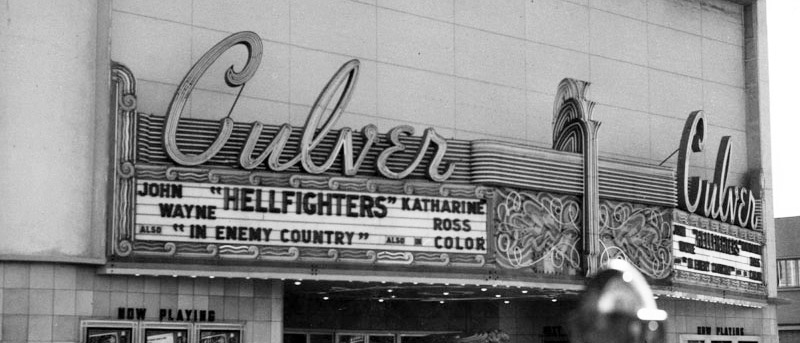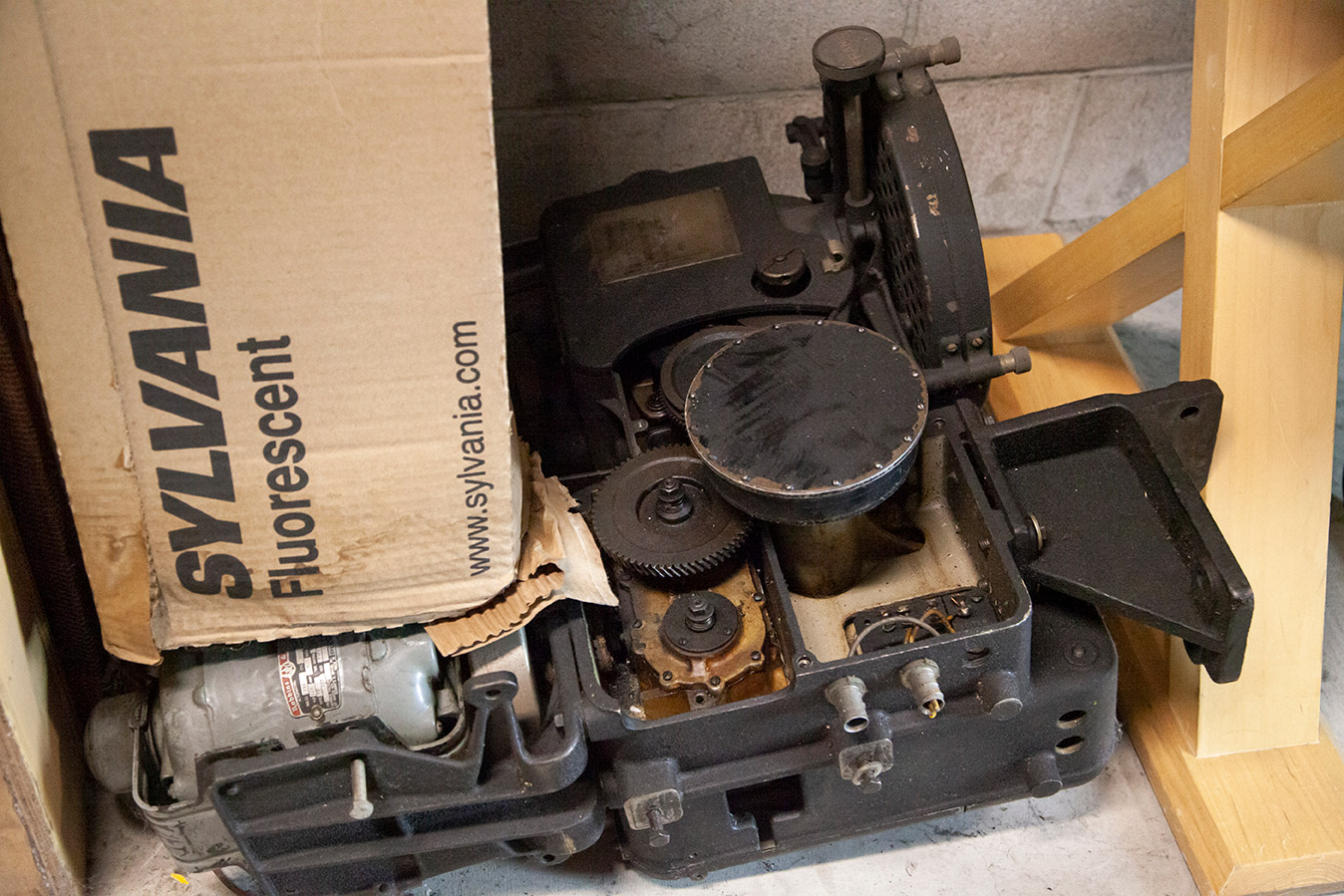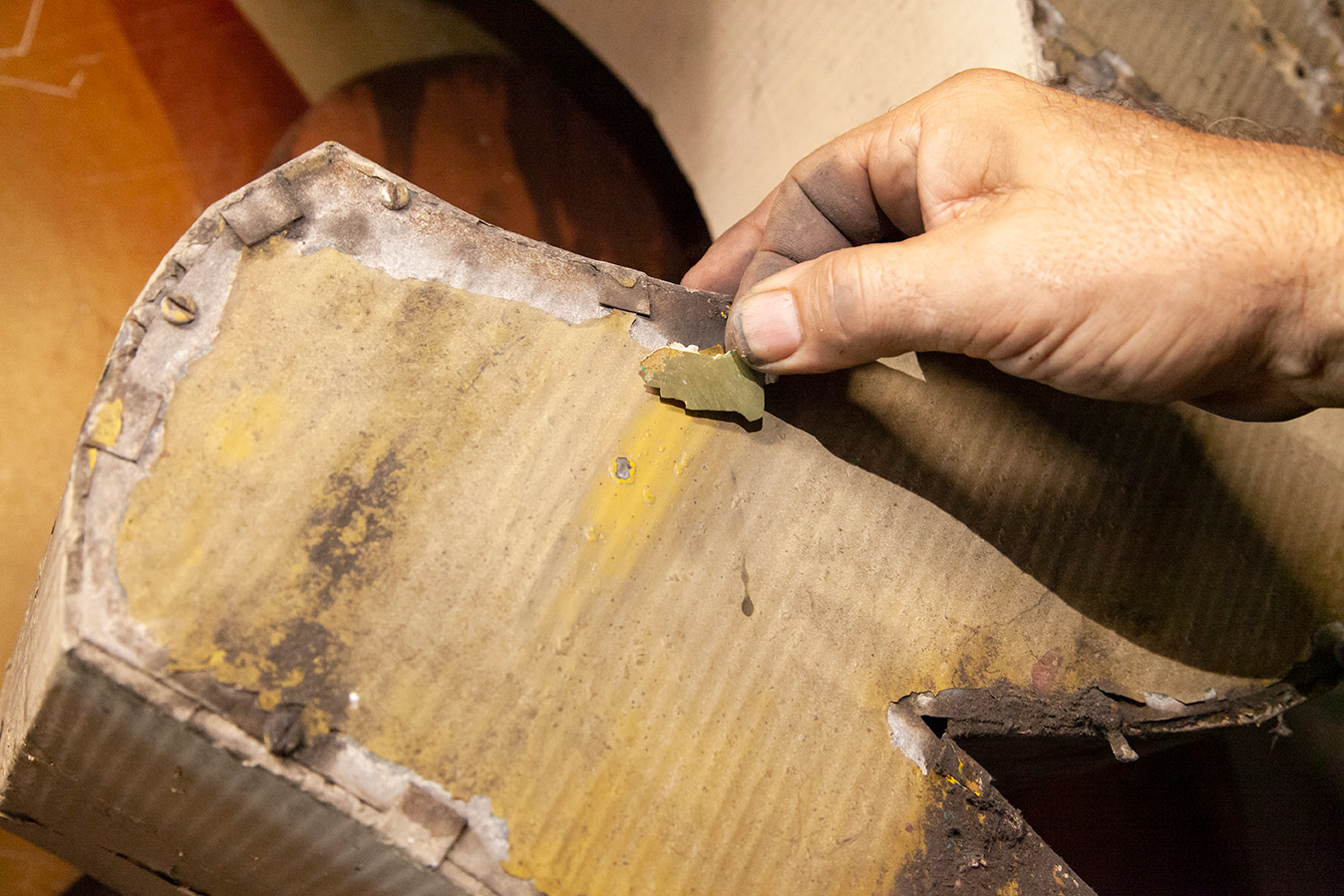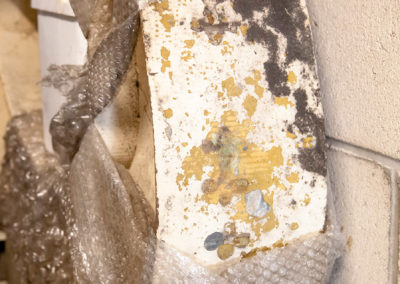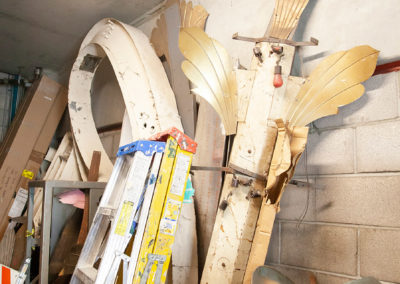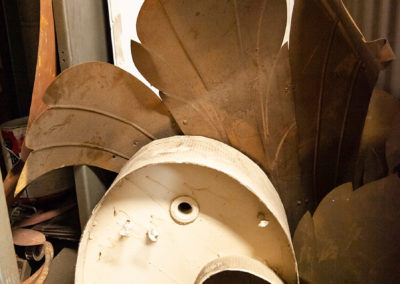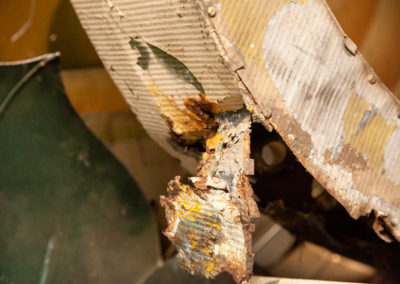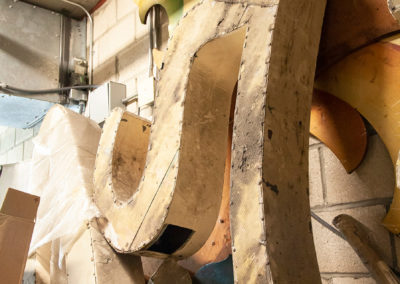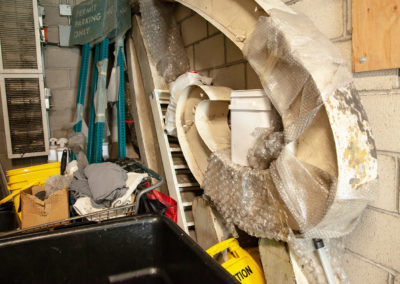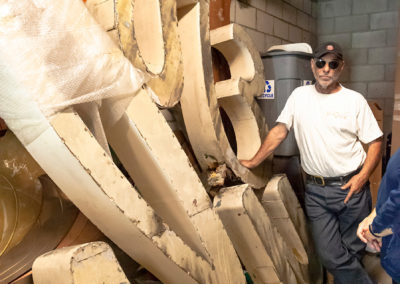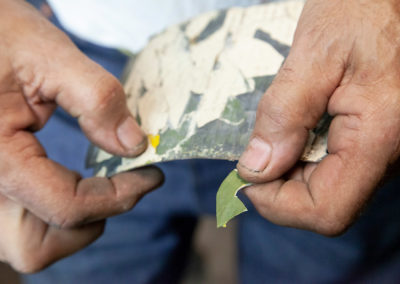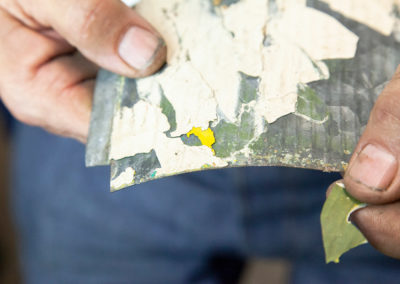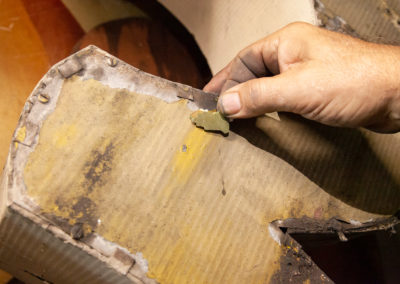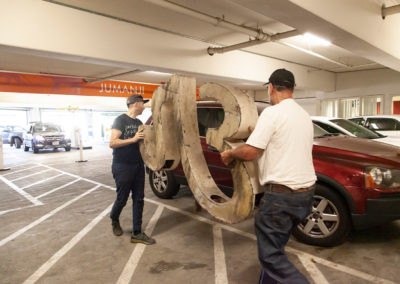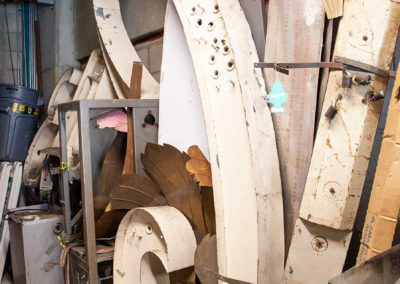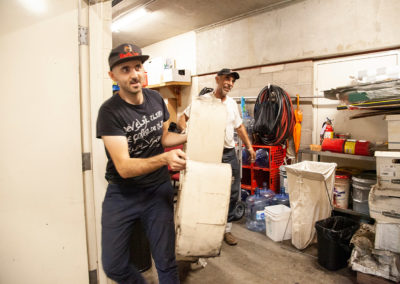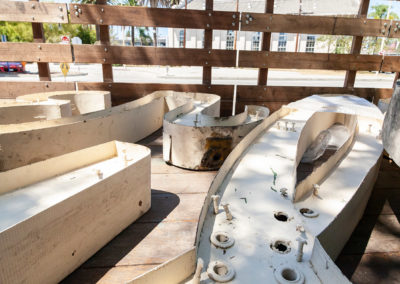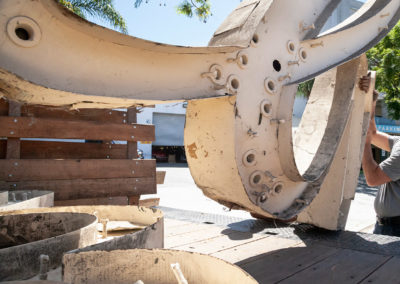Today, Regency Centers and restoration expert, Paul Greenstein, along with Public Art & Historic Preservation Coordinator Christine Byers, has embarked on a journey to restore the Culver Theatre’s iconic neon sign to its former glory. Check back on this site as we progress through this process.
Full Gallery
Click on any image to view larger.
The Culver Theatre opened on August 13, 1946, with a seating capacity of around 1,100, showing the film “Red Stallion”
Albert R. Walker was the architect of record and Carl G. Moeller was the design consultant. The design style was “Streamline Moderne” or “Art Moderne;” a later version of art deco architecture which was less ornamental and more ‘aerodynamic’ in look.
The interior of the Culver was a “Skouras Style” confection. At a time when much design was getting the modern look, the head of Fox West Coast Theatres, Charles Skouras, had his architectural team in the late 40s and early 50s take a different tack towards a lush neobaroque feel.” Source
